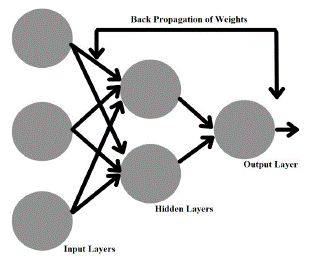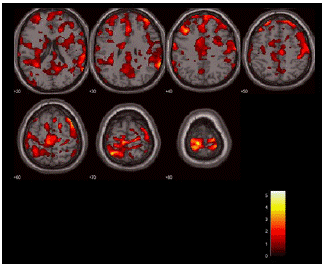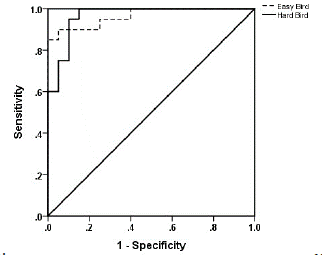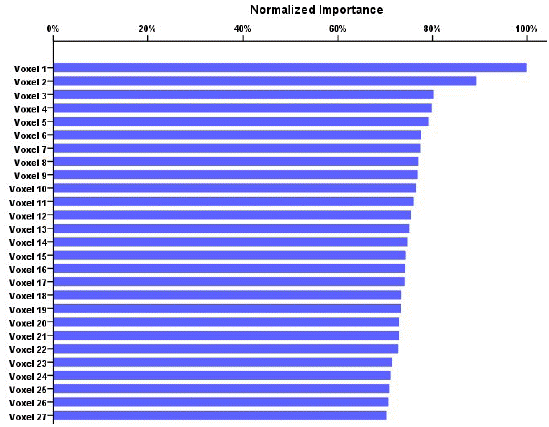
Research Article
Austin J Clin Neurol. 2023; 10(1): 1161.
Dependent Personality Disorder: An Approach Based on fMRI
Waqas Tariq1; Waqar Mahmood Dar2; Abid Ali3; Ali Haider4*; Umair Waqas2; Rehan Afsar2; Muhammad Arslan5
1Lecturer, Department of Computer Science, Gift University Gujranwala, Pakistan
2Lecturer, Department of Allied Health Sciences, The University of Chenab, Gujrat, Pakistan
3Associate Professor, Department of Allied Health Sciences, The University of Chenab, Gujrat, Pakistan
4BMLS Scholar, Department of Allied Health Sciences, The University of Lahore, Gujrat Campus, Pakistan
5Nawaz Sharif Medical College, Gujrat, Pakistan
*Corresponding author: Ali Haider BMLS Scholar, Department of Allied Health Sciences, The University of Lahore, Gujrat Campus, Pakistan. Tel: +923304627172 Email: alihaider535@gmail.com
Received: April 20, 2023 Accepted: May 30, 2023 Published: June 06, 2023
Abstract
Background: Dependent Personality Disorder (DPD) is one of the most frequent diagnosed personality disorders. People with DPD become over-dependent on other people and unable to make even everyday decisions.
Objective: To detect the neuron network and activation in Brodmann areas (BA 10, BA 11, & BA 47) of the human brain by using Functional Magnetic Resonance Imaging (fMRI) and to identify voxels used in decision making process.
Material and Methods: It is an experimental study conducted on a single subject under a controlled observed environment using Functional Magnetic Resonance Imaging (fMRI). The respondent selected was performing a task based on two visual conditions in which two different types of images (easy and hard birds) were displayed to the respondent. The subject was asked for identification of the particular bird image to visualize voxels used in decision making process. Three Brodmann areas (BA 10, BA 11, & BA 47) from prefrontal cortex were selected as a region of interest. The current study analyzed activated brain regions during making ordinary decisions related to two visual conditions. A multivariate technique Multilayer Perceptron (MLP) neural network was applied for the categorization of two ordinary decisions made by respondent while performing visual task.
Results: The experimental results show the high classification accuracy 92.9% for ordinary decisions between two visual conditions. Sensitivity and specificity of MLP neural network is represented by ROC curve. The MLP neural network technique also detected some important voxels of Brodmann areas 10, 11 and 47 in prefrontal cortex of brain, which engaged in primary role of ordinary decision making process. The current study tracked down the area of that particular prevailing voxels in prefrontal cortex of brain in context of MNI coordinates.
Conclusion: In conclusion, the MLP neural network proficiently classified the voxels which were activated in decision making and provided high classification rates. It also identified significant voxels helping a person in ordinary decision making. The locations of that particular voxels were found in context of MNI coordinates. This study can be helpful in the treatment of patients with DPD by combination of medication and psychotherapy.
Advances in Knowledge: This paper explains precise location of dominant voxels discovered in decision making process which can be used in treatment methods among dependent personality disorder patients. At present, the treatment options are limited, and this paper will give psychiatrists and psychologists the knowledge they need to advance their combination therapies.
Keywords: Dependent personality disorder; Functional magnetic resonance imaging; Brodmann areas; Computational neural networks
Introduction
Functional magnetic resonance imaging is an exceptional tool for diagnosing mental disorders [1]. Functional MRI has low temporal resolution but excellent spatial resolution and fewer radiations are reasons that use of fMRI has increased intuitively [1]. The fMRI machine identifies blood oxygenation level dependent effect for functional images of brain [2]. Functional magnetic resonance imaging provides the view of how brain works in different cognitive tasks. Functional MRI was extensively used to study treatment effects of mental disorders [3]. In task-based fMRI experiments different brain regions interacting each other called Default Mode Network (DMN) [4,5].
The incidence of personality disorders is 10% to 20% in general population and its symptoms appear within some years [6]. Personality disorder leads to significant personality instabilities if untreated [6]. Mental Disorder appears mostly at young age. If a mental disorder is diagnosed and treated timely, it can improve cognitive ability [7]. Dependent personality disorder is one of most common disorder in human beings. Extreme care primes a person to dependent personality disorder patient. DPD affects the way people think and act [8]. People with DPD have a devastating need to have others for taking care of them and often depend on people close to them for their needs [8]. They even rely on others for making everyday decisions like what to wear. The important characteristics of DPD are lack of self-assurance, depending on others and sidestepping from taking responsibilities. There are different approaches for the treatment of depended individuals but some of them have resulted [9]. Self-efficacy of DPD patients can be improved by cognitive behavioral therapy [5].
The current experimental study used event-related fMRI data in which respondent was performing a task based on two visual conditions. Two different types of images (easy and hard birds) was displayed to the respondent and asked for identification of the particular bird in the image. The objective of the current study was to propose a novel approach for DPD patients by classification and identification of voxels which is used in ordinary decision making. The selected three Brodmann areas (BA 10, BA 11, & BA 47) from prefrontal cortex as our region of interest were selected, because the decision making is one of function of these Brodmann areas [10]. MLP neural network was applied for categorization of two ordinary decisions made by respondent while performing visual task and for identification of most significant voxels which helps an individual in making decision [11].
Material and Methodology
It is an experimental study conducted on a single subject under a controlled observed environment using Functional Magnetic Resonance Imaging (fMRI). The respondent selected was performing a task based on two visual conditions in which two different types of images (easy and hard birds) were displayed to the respondent. The subject was asked for identification of the particular bird image to visualize voxels used in decision making process. Three Brodmann areas (BA 10, BA 11, & BA 47) from prefrontal cortex were selected as a region of interest. The current study analyzed activated brain regions during making ordinary decisions related to two visual conditions. A multivariate technique Multilayer Perceptron (MLP) neural network was applied for the categorization of two ordinary decisions made by respondent while performing visual task. ANN stirred by incredible functionality of human brain [12]. ANN is a multivariate interdependence technique and used in extraction of patterns and finding of trend [9]. ANN also used in finding causal relationship [12]. There are different types of ANN which used in machine learning and artificial intelligence [13].
Architecture of MLP Neural Network
One of most common type of ANN is MLP neural network. Among feed-forward and feedback structures, MLP is based on feed-forward structure in which data circulates one way [14]. MLP consist of input layer, hidden layer and output layer [15]. Input layer collects data from outward source and transfer to next layer (hidden layer), then hidden layer converts the data into some other form which is useable by output layer [16]. A weight is assigned to every input. Greater weight of input represents greater importance of it [16]. The structure of MLP neural network is shown in (Figure 1).

Figure 1: Structure of MLP neural network.
The output oi of hidden layers is,
Where each input yi is multiply by its corresponding weight wij and then hidden layer Ghid accumulates weighted amount of inputs. β is activation function which is used by hidden layer to produce an output [17]. Hidden and output layer are similar in function i.e. getting weighted amount of inputs to produce an output for the network [16]. Among different activation functions, logistic function is more reliable for classification of patterns [18]. ANN produces multiple tables and diagrams to understand the output of study.
Data Explanation
Functional magnetic resonance imaging data available at public site ‘http: //cnl.web.arizona.edu/spm.html’ used in this study. This data also utilized in consumer behavior decision making between products and also in estimation of parameters by neighborhood methodology [10]. These fMRI experiments based on 3 visual situations consist of bird pictures (Easy, Control and Hard to Recognize) were presented to the subject and in response subject decided either he recognizes the bird picture or not. There were two blocks of each condition, easy and hard bird pictures and four blocks of control birds. Time repetition was 2 seconds between each fMRI scan and total of 80 scans of whole brain were collected. The fMRI scans were collected using GE 1.5 Tesla [10]. The whole brain consists of 17 slices with 5mm thickness and voxel size 64×64×17. The hypothesis was that areas of prefrontal and visual cortex of brain would activate when subject perceived a bird picture and replied about the bird picture.
Data Pre-Processing
The MATLAB, Statistical Parameter Mapping (SPM) and Brain Tutor were used for pre-processing and analysis of functional MRI data. The study used event-related fMRI data which includes 3 different conditions. The pre-processing of fMRI data steps which includes (a) Realignment (Head Movement Correction), (b) Normalization, (c) Slice Time Correction and (d) Smoothing were performed in SPM package.
Analysis of fMRI Data
The statistical analysis of fMRI data was performed on realigned, normalized, corrected slice timing and smoothed images. This procedure involves three steps to check the activation of voxels in brain during fMRI experiment [10]. At first step we specified 3 visual situations with their onsets and duration by using block design of 80 fMRI scans. It also mentioned that there was two second gap between each scan.
In second step we estimated the model parameters of entire brain using generalized least square method. Then in third step we used contrast method (comparing beta images) of SPM to get the activation of brain during the experiment. The contrast [-101] and threshold value of 0.05 used to obtain significantly activated voxels in brain parallel to easy and hard condition. The activation of different brain region voxels during the experiment is shown in (Figure 2).

Figure 2: Activation of different brain regions during the experiment.
Activation covered prefrontal cortex, visual and motor area of brain, on the basis of significantly activated area in brain. The Brodmann Areas (BA) 10, BA 11 and BA 47 were Region of Interest (ROI) from prefrontal cortex for the current study. The core function of voxels in these Brodmann areas is decision making according to neurological research [19]. The ROI is shown in (Figure 3).

Figure 3: Brain slice areas of BA 10, BA 11 and BA 47.
Figure 3 shows the region of interest for analysis with axial view of brain slice. The red, orange and blue colors in image show the areas of BA 10, BA 11 and BA 47 respectively.
Results
To apply the MLP neural network the study used the voxels of BA 10, BA 11, and BA 47 as independent variables. The output of MLP neural network is shown in (Table 1, 2 & 3).
Case Processing Summary
N
Percent
Sample
Training
26
65.0%
Testing
14
35.0%
Valid
40
100.00%
Excluded
0
Total
40
Table 1: MLP neural network training and testing phase.
Table 1 is representing the case processing summary of neural network model. No one case excluded from the analysis and out of 40 cases, 65% data which is 26 cases was used for training and 35% data which is 14 cases was used for testing of ANN model.
Table 2 represents that there was 7.7% incorrect predictions while training procedure and 7.1% incorrect predictions in testing procedure of ultimate classification model.
Model Summary
Training Phase
% False Predictions
0.077
Testing Phase
% False Predictions
0.071
Table 2: Testing procedure of ultimate classification model.
Table 3 represents the classification of voxels of BA 10, BA 11 and BA 47 which used in decision making corresponding to easy and hard bird conditions.
Classification
Trial
Observed
Predicted
Easy Bird Picture
Hard Bird Picture
% Correct Predictions
Training
Easy Bird Picture
10
2
83.3%
Hard Bird Picture
0
14
100.0%
Overall Percent
38.5%
61.5%
92.3%
Testing
Easy Bird Picture
7
1
87.5%
Hard Bird Picture
0
6
100.0%
Overall Percent
50.0%
50.0%
92.9%
Table 3: Classification of voxels of BA 10, BA 11 and BA 47.
MLP neural network proficiently classified the voxels which used in decision making process. The off-diagonal values represents the incorrect predictions while diagonal values of table 3 represents correct predictions for training and testing phase of model. In training sample, there was 24 correct predictions (92.3%) and 2 incorrect predictions (7.7%), whereas in testing sample there was 13 correct predictions (92.9%) and 1 incorrect prediction (7.1%). The study created ROC curve as shown in Figure 4 to check the significance of classification model for 2 visual states (easy bird & hard bird).

Figure 4: Shows the sensitivity and specificity of MLP neural network.
ROC curve shows the true positive and false positive rate of MLP neural network model. In ROC curve the dotted line shows the decision/prediction about easy bird and solid line shows the decision/prediction for hard bird. Sensitivity and specificity of ROC curve was 87.5 % and 89% respectively which was good result for classification. MLP neural network model produces another table titled “Independent variable importance” shown in (Table 4).
Sr. no
Weight
MNI Coordinates of voxels
x
y
z
1
100%
-12
64
26
2
89.4%
-54
34
-4
3
80.3%
-42
42
14
4
80.0%
-52
34
-2
5
79.2%
-32
38
-18
6
77.7%
-40
50
16
7
77.6%
-44
44
24
8
77.1%
-46
48
16
9
77.0%
-30
42
-14
10
76.6%
-16
66
22
11
76.1%
-50
34
-2
12
75.5%
-28
10
-20
13
75.2%
-56
28
0
14
74.8%
-36
64
12
15
74.4%
-42
58
8
16
74.3%
-38
18
-10
17
74.2%
-28
50
-10
18
73.4%
-36
60
16
19
73.4%
-30
58
-12
20
73.1%
50
20
-8
21
73.1%
-30
42
-16
22
72.8%
-28
30
-16
23
71.5%
-38
50
14
24
71.2%
-14
62
24
25
71.0%
-12
64
24
26
70.7%
-38
40
14
27
70.4%
-14
50
-4
Table 4: Voxels with their locations in prefrontal cortex of brain.
Table 4 shows that above 70% activated significant voxels while ordinary decision making with their locations in prefrontal cortex of brain.
Table 4 shows the importance of activated voxels of BA 10, BA 11, and BA 47 with their locations while making ordinary decisions for easy and hard bird conditions. MRIcron and MATLAB software’s used for determination of locations of utmost important voxels. The importance of foremost activated voxels during ordinary decision making is shown in (Figure 5).

Figure 5: Significance of voxels for decision making.
Figure 5 shows the bars in above given graph shows the significance of voxels for decision making. The most important voxels of BA 47, BA 10 and BA 11 for ordinary decision making is shown in Figure 6 with multislice view using MRIcron.

Figure 6: The location of most significant voxels in multi-slice view.
The locations of decision making voxels in 3D are shown in Figure 7 with and without cut-out brain image. MRIcron software was used for the 3D images.

Figure 7: Location of most significant voxels for decision making with cut-out brain image.
Discussion
According to the American Psychiatric Association (APA) the 5% of the general population is affected by Dependent Personality Disorder (DPD). Men’s are less affected by DPD than women’s {Sansone, 2011 #1}. The persons having DPD face difficulty in making routine/ordinary decisions. The psychotherapy of DPD patients is quite difficult [20]. The human brain controls the whole body system. The study population was voxels of whole brain. After getting results of activated voxels with help of SPM, the Region of Interest (ROI) was selected as the Brodmann area 10, BA 11 and BA 47 have key function of decision making process [10]. The clusters of voxels were selected from ROI for classification of decisions made by respondent during the experiment. MLP neural network classifier has widely used in pattern recognition [10]. MLP neural network played a significant role in classification of decision making between two graphical conditions (easy and hard bird). The major finding of this study was the location of voxels which were more dominant during decision making process. The findings such as voxels identification are supportive to doctors/psychiatrics for treatment of dependent personality disorder patients. Physicians can generate therapies and further treatments at exact location of most dominated voxels for decision making. In current study above 70% activated significant voxels while ordinary decision making with their locations in prefrontal cortex of brain. The importance of activated voxels of BA 10, BA 11, and BA 47 with their locations while making ordinary decisions for easy and hard bird conditions. MRIcron and MATLAB software’s used for determination of locations of utmost important voxels. The importance of foremost activated voxels during ordinary decision making is shown in (Figure 5).
Conclusion
In fMRI experiment three visual conditions (easy, control and hard birds) was presented to the respondent for making decision regarding recognition of particular bird. MLP neural network proficiently classified the voxels which were activated in decision making between 2 visual states (easy and hard bird). Some other classifiers such as Logistic Regression (LR) and Linear Discriminant Analysis (LDA) were applied but MLP neural network provided best classification rates. This deep learning method (MLP NN) also identified most significant voxels which helps a person in making ordinary decisions. The study found voxels in decision making in location of particular voxels in context of MNI coordinates. The current study findings can be considered for the treatment/therapies of patients having dependent personality disorder.
References
- Zarnowski O, Ziton S, Holmberg R, Musto S, Riegle S, et al. Functional MRI findings in personality disorders: A review. Journal of neuroimaging : official journal of the American Society of Neuroimaging. 2021; 31: 1049-66.
- Glover GH. Overview of functional magnetic resonance imaging. Neurosurgery Clinics. 2011; 22: 133-9.
- Chinda B, Tran KH, Doesburg S, Siu W, Medvedev G, et al. Functional MRI evaluation of cognitive effects of carotid stenosis revascularization. 2022; 12: e2512.
- Buckner RL, Andrews-Hanna JR, Schacter DL. The brain’s default network: anatomy, function, and relevance to disease. Annals of the New York Academy of Sciences. 2008; 1124: 1-38.
- Köse SS, Erbaş O. Personality disorders diagnosis, causes, and treatments. Demiroglu Science University Florence Nightingale Journal of Transplantation. 2020; 5: 022-31.
- Firoozan T, Khosropour F, Anari AMZ. The Relationship of the Enneagram Personality Types and the Early Maladaptive Schemas to Dependent Personality Disorder. Journal of Positive School Psychology. 2022; 6: 159–66.
- Chakraborty I. Dependent Personality Disorder: A review Based on Mental Health Literacy Perspective. International Journal of Recent Advances in Multidisciplinary Topics. 2022; 3: 57-9.
- Heintz HL, Freedberg AL, Harper DG. Dependent personality in depressed older adults: a case report and systematic review. Journal of Geriatric Psychiatry and Neurology. 2021; 34: 445-53.
- Marchetti D, Musso P, Verrocchio MC, Manna G, Kopala-Sibley DC, et al. Childhood maltreatment, personality vulnerability profiles, and borderline personality disorder symptoms in adolescents. Development and psychopathology. 2022; 34: 1163-76.
- Ahmad F, editor An fmri study of neural decision making using support vector machine. Proceedings of Business and Management Conferences; 2018: International Institute of Social and Economic Sciences. 2018.
- Li X, Zhou Y, Dvornek N, Zhang M, Gao S, et al. Braingnn: Interpretable brain graph neural network for fmri analysis. Medical Image Analysis. 2021; 74: 102233.
- Dreiseitl S, Ohno-Machado L. Logistic regression and artificial neural network classification models: a methodology review. Journal of biomedical informatics. 2002; 35: 352-9.
- Khashei M, Bijari M. An artificial neural network (p, d, q) model for timeseries forecasting. Expert Systems with applications. 2010; 37: 479-89.
- Ben Driss S, Soua M, Kachouri R, Akil M, editors. A comparison study between MLP and Convolutional Neural Network models for character recognition. SPIE. 2017.
- Boughrara H, Chtourou M, Ben Amar C, Chen L. Facial expression recognition based on a mlp neural network using constructive training algorithm. Multimedia Tools and Applications. 2016; 75: 709-31.
- Desai M, Shah M. An anatomization on breast cancer detection and diagnosis employing multi-layer perceptron neural network (MLP) and Convolutional neural network (CNN). Clinical eHealth. 2021; 4: 1-11.
- Singh S, Kanli AI, Sevgen S. A general approach for porosity estimation using artificial neural network method: a case study from Kansas gas field. Studia Geophysica et Geodaetica. 2016; 60: 130-40.
- Tian Z. An artificial neural network method for remaining useful life prediction of equipment subject to condition monitoring. Journal of intelligent Manufacturing. 2012; 23: 227-37.
- Tannou T, Magnin E, Comte A, Aubry R, Joubert S. Neural activation in risky decision-making tasks in healthy older adults: a meta-analysis of fMRI data. Brain sciences. 2021; 11: 1043.
- Angelakis I, Huggett C, Gooding P, Panagioti M, Hodkinson A. Effectiveness of cognitive–behavioural therapies of varying complexity in reducing depression in adults: systematic review and network meta-analysis. The British Journal of Psychiatry. 2022; 1-9.